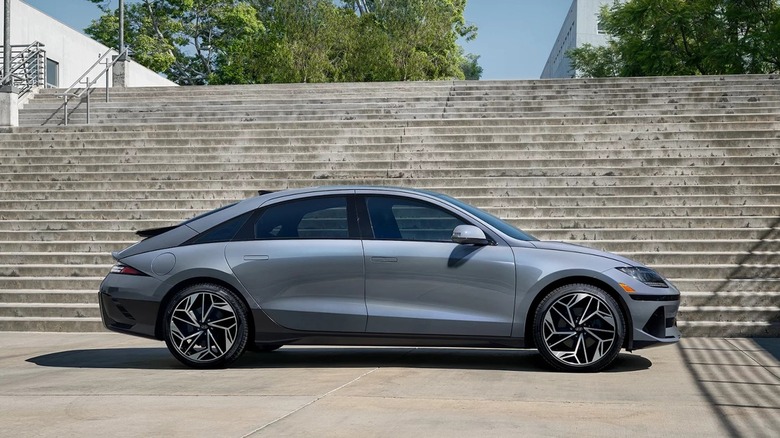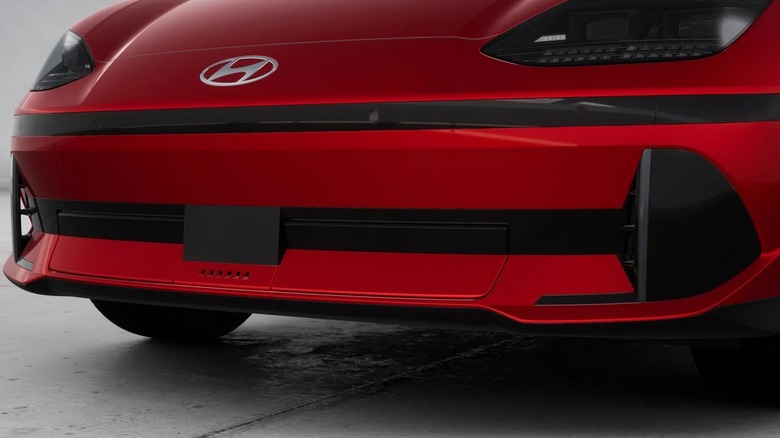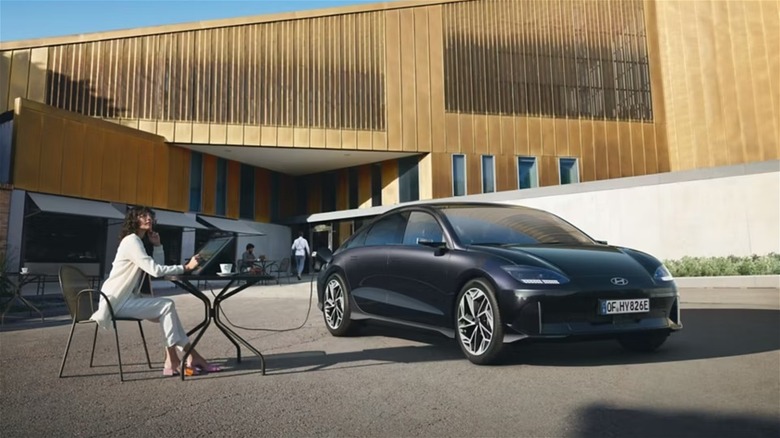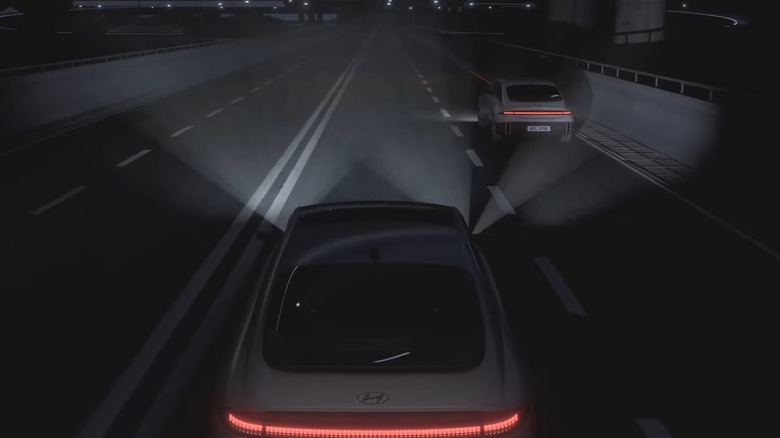3 Standard Tech Ioniq 6 Features We Wish More Cars Had
The South Korean automaker Hyundai, has been hard at work on electric vehicles long before the Ioniq 6. Their first model debuted back in 2009 and was called the BlueOn, but was only available in South Korea. Fast forward to today, and innovative Hyundai features are proving to be an attractive choice for those looking to go electric. In fact, some of the technology incorporated into the Ioniq 6 would be even more helpful if it were available in more vehicles across the industry.
One of the key aspects Hyundai focused on with the Ioniq 6, was aerodynamic design. The look of this sedan isn't just sleek in terms of aesthetics, but provides practical elements built into the exterior, like active grille shutters, that improve efficiency. Another feature that is surprisingly not available in all EVs, is the vehicle-to-load charging, which uses the car's battery to power several external devices. Lastly, the automaker has included the Intelligent Front-lighting System, which turns off only sections of the high-beams that will affect other drivers. We got a chance to review the 2023 Hyundai Ioniq 6, and experience first-hand how it stacks up against the Tesla Model 3.
Active grille shutters that perform two functions
Aerodynamics are important for vehicles in terms of efficiency. Wind resistance can have a major impact on traditional gasoline engines and EVs. According to Symulacfd.com, aerodynamic forces influence 8 to 12% of the overall fuel utilized during travel, especially at highway speeds. For an EV, instead of gasoline, air resistance would reduce total range. The Ioniq 6 is hardly the first vehicle to endure extensive wind tunnel testing, but Hyundai engineers went the extra mile striving for every bit of efficiency at wind speeds up to 124 mph.
One of the external features included in the Ioniq 6 is a system called active grille shutters. These are rectangular flaps that automatically open when the radiator needs cooling, and close when not needed to lower wind drag. This dual-purpose feature provides both temperature regulation and enhanced efficiency, without any driver interaction. While not a feature completely unique to the Ioniq 6, a greater emphasis on aerodynamics and technology like active grille shutters would be useful in more automobiles.
Power devices with vehicle-to-load technology
One of the new EV features we wish every car had, is the vehicle-to-load system. An EV is powered by a large battery or two, that must be recharged following use. But what if instead of just charging the batteries, you could also use them to power things when on the go? The Ioniq 6 can act as a mobile power source and let you plug in all sorts of devices that require energy to operate. Of course you can charge up your smartphone, but it goes way beyond that. With up to 3.6kW of electricity to work with, this Hyundai EV can run a variety of devices such as small kitchen appliances, televisions, and camping gear.
Vehicle-to-load technology is also great for situations where you would typically use a traditional generator. Power outages, emergency situations, and any circumstance where the power grid isn't an option, the Ioniq 6 essentially becomes a giant portable battery. Although, bear in mind, the length of time you can power an external device depends on how much power it requires, so plan usage carefully.
Intelligent high-beams that don't blind other drivers
You may have heard about a feature called High-Beam Assist, that can detect an oncoming car and automatically dim the headlights then return them to high-beams after the vehicle passes. Hyundai's Intelligent Front-lighting System (IFS) is even more advanced and utilizes a camera, specialized controller, and module. The Ioniq 6 uses matrix headlights that can precisely eliminate certain portions of the light that may cause visibility issues for other motorists. For example, say another vehicle going the same direction passes you while your high-beams are engaged. The IFS will calculate which LEDs are beaming light toward the other vehicle and shut them off, while the rest of the headlight continues shining brightly.
The IFS is a much better solution than simple switching from high to low-beams, because it works for more than just oncoming traffic, and allows you to continue to use high-beams without disrupting other drivers. Visibility is crucial during evening travel and an advanced system like IFS is something that hopefully more automakers will adapt to their models in the future.



